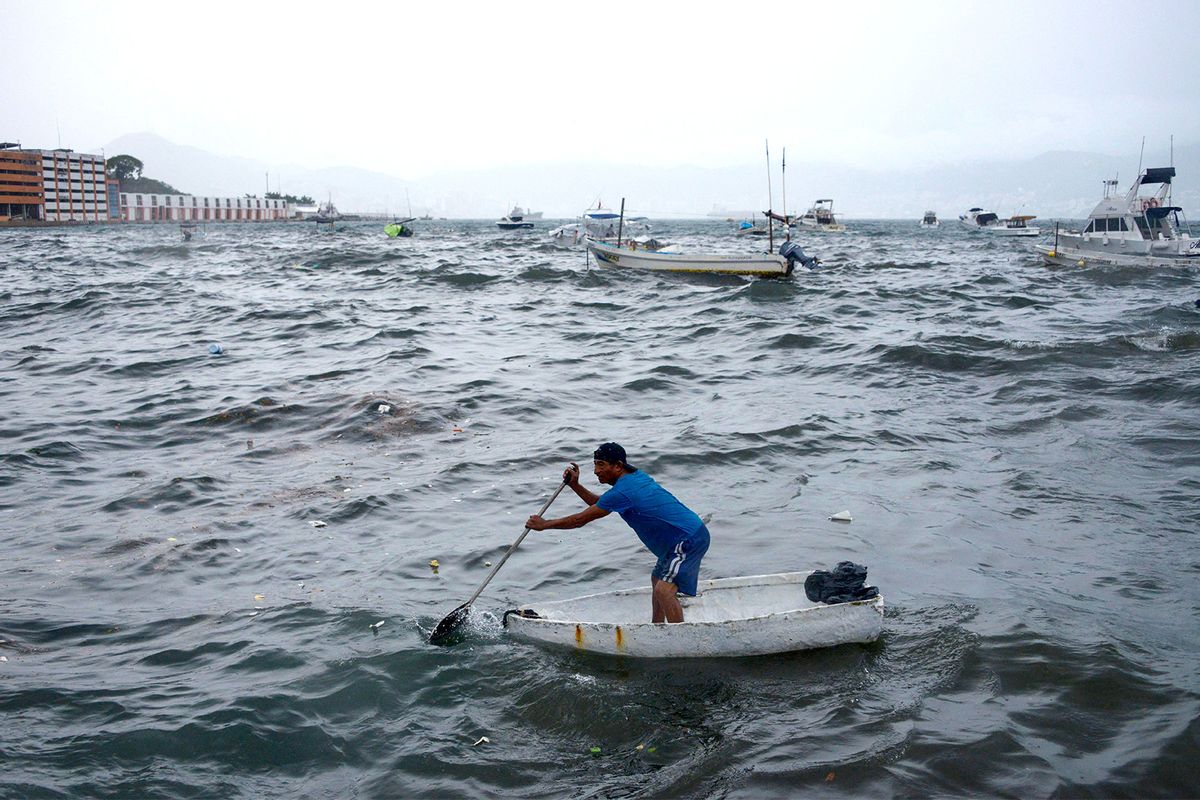Less than a week after Hurricane Dora stirred up 60-mile-per-hour winds that spread some of the deadliest wildfires on Maui that the U.S. has seen in a century, Hurricane Hilary formed off the coast of Mexico and is expected to impact parts of the southwestern U.S. over the weekend. On Thursday morning, scientists officially classified the tropical storm as a hurricane and warned that it could make direct contact somewhere between Baja California, Mexico and San Diego, California, Axios reported. It is currently predicted to reach at least a Category 3 status — the same as Hurricane Katrina — and bring flooding rains and high winds as far as Nevada and Arizona.
Forecasters predict the hurricane will lose lots of its power and lower in category severity as it passes through cooler waters and approaches land. Still, it could bring a year's worth of rain to places like Palm Springs, California, or Phoenix, Arizona, most likely on Sunday or Monday. There have only been two tropical storms that have come within 100 miles of San Diego, and it has been over 50 years since this occurred, according to meteorologist Kieran Bhatia, Ph.D. "[Hurricane] Hilary over SoCal would equate to a nearly unprecedented event and should be monitored closely," he tweeted.
Climate change is warming the oceans and increasing the frequency and intensity of extreme climate events like hurricanes. Scientists warned that the chances of an aggressive hurricane season are increasing, especially because El Niño is affecting currents and warming ocean and air temperatures across the globe this year. Hurricane Hilary follows a summer of widespread wildfires and extreme heat.
"This is unlikely to be, at this point, just a nuisance event and could actually produce some major impacts," said Daniel Swain, a climate scientist at UCLA, in a video. "This is not typical for August in any part of California."



Shares